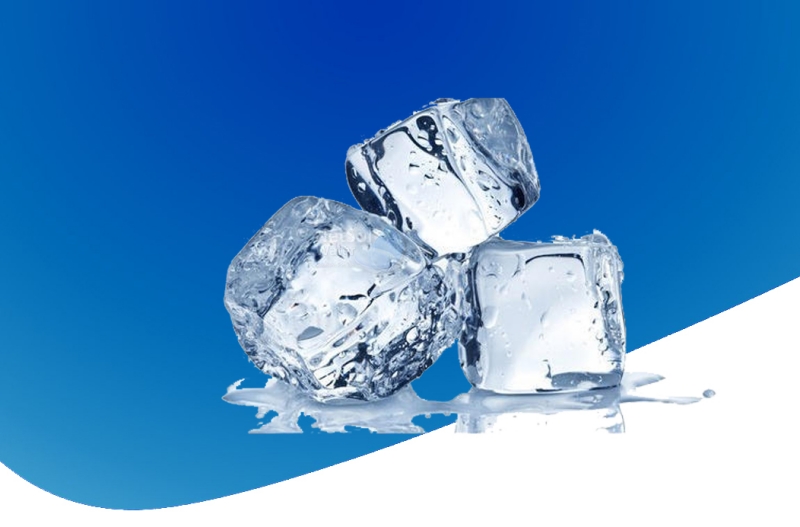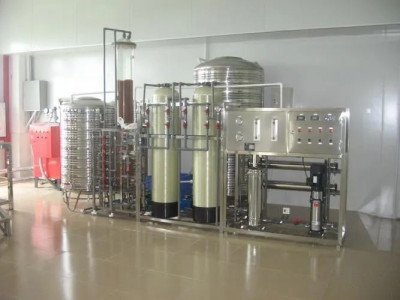A água é uma substância fascinante que serve como a força vital do nosso planeta. Desde saciar a nossa sede até nutrir a vegetação exuberante que nos rodeia, o seu significado não pode ser exagerado. Mas você já parou para pensar no papel que a água desempenha em algo tão simples e refrescante como o gelo? Isso mesmo! Mesmo no mundo das delícias congeladas, a qualidade da água é importante. Neste artigo, mergulharemos no mundo cativante da fabricação de gelo e exploraremos a importância do tratamento da água para garantir que cada criação gelada seja não apenas deliciosa, mas também segura para consumo. Então, prepare-se para embarcar em uma aventura gelada onde a ciência encontra o refresco!
A importância do tratamento de água na fabricação de gelo
O tratamento da água desempenha um papel crucial no processo de fabricação do gelo, garantindo que o gelo produzido seja de alta qualidade, seguro para consumo e atenda às normas sanitárias. Compreender como a água é tratada na fabricação de gelo é essencial para avaliar sua importância.
A fabricação de gelo envolve uma série de etapas para transformar a água em cubos ou blocos de gelo sólidos. O processo normalmente começa com o abastecimento de água, que pode vir de diversas fontes naturais, como rios, lagos ou poços. No entanto, esta água não tratada contém frequentemente impurezas que podem impactar negativamente a qualidade do gelo produzido.
As impurezas da água comumente encontradas na fabricação de gelo incluem bactérias e microorganismos, sedimentos e partículas, contaminantes químicos e minerais de água dura. Bactérias e microorganismos representam um risco significativo à saúde se não forem eliminados por meio de tratamento adequado. Sedimentos e partículas podem tornar o gelo turvo ou descolorido, afetando sua aparência e potencialmente desencorajando os clientes. Contaminantes químicos presentes na água não tratada podem alterar o sabor e o odor do gelo. Minerais de água dura, como cálcio e magnésio, podem causar acúmulo de incrustações em máquinas de gelo, reduzindo sua eficiência.
O uso de água não tratada na fabricação de gelo pode ter diversos efeitos adversos na qualidade do produto final. O gelo feito de água não tratada pode ter sabor ou odor desagradável devido à contaminação bacteriana ou impurezas químicas. Cubos de gelo turvos ou descoloridos não são atraentes para os clientes que esperam gelo transparente e visualmente atraente. Além disso, a água não tratada pode resultar em taxas de fusão aumentadas devido ao maior conteúdo mineral ou às características de congelamento deficientes. Isso não afeta apenas a satisfação do cliente, mas também leva a custos operacionais mais elevados para as empresas.
O tratamento adequado da água na fabricação de gelo oferece inúmeros benefícios que vão além de apenas melhorar a qualidade do gelo produzido. O tratamento da água antes de entrar na máquina de gelo garante melhor sabor e odor do produto final, melhorando a experiência e a satisfação do cliente. O gelo de alta qualidade também melhora a apresentação da bebida quando usado em bebidas em bares ou restaurantes.
Além disso, a implementação de métodos eficazes de tratamento de água reduz os custos de manutenção associados ao acúmulo de incrustações e danos aos equipamentos causados pela água não tratada. Ao remover impurezas, os sistemas de tratamento de água ajudam a manter a eficiência das máquinas de gelo, resultando em economia de energia e prolongamento da vida útil do equipamento.
A conformidade com os regulamentos e padrões de saúde é outro aspecto crucial do tratamento da água na fabricação de gelo. A água devidamente tratada garante que o gelo produzido atenda aos padrões sanitários exigidos, minimizando o risco de contaminação e potenciais riscos à saúde dos consumidores.
Existem vários tipos de métodos de tratamento de água disponíveis para fabricação de gelo, incluindo sistemas de filtração, esterilização UV, osmose reversa e sistemas de troca iônica. Cada método tem suas próprias vantagens e considerações baseadas em necessidades específicas e requisitos de qualidade da água.




